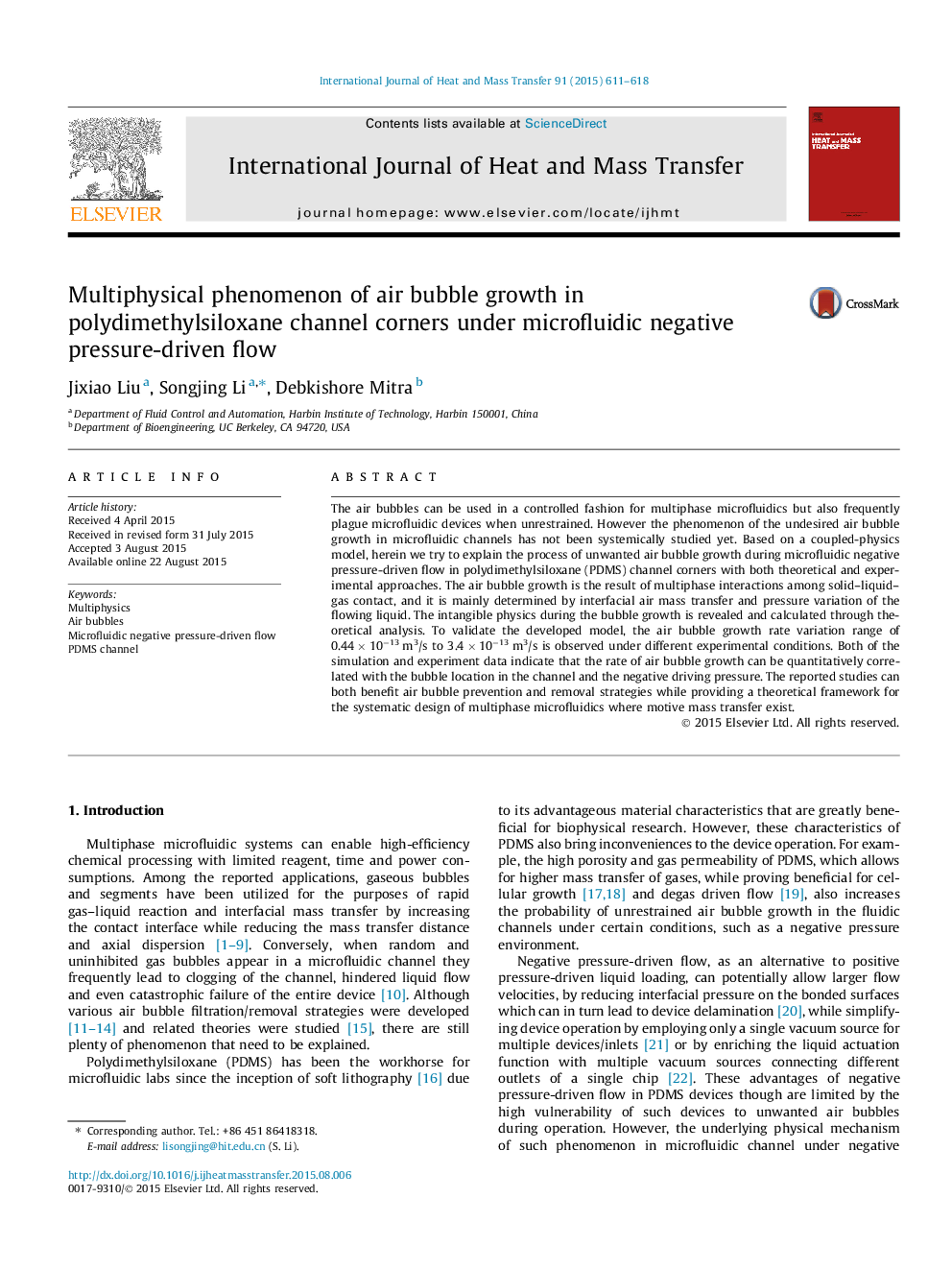| Article ID | Journal | Published Year | Pages | File Type |
|---|---|---|---|---|
| 7056310 | International Journal of Heat and Mass Transfer | 2015 | 8 Pages |
Abstract
The air bubbles can be used in a controlled fashion for multiphase microfluidics but also frequently plague microfluidic devices when unrestrained. However the phenomenon of the undesired air bubble growth in microfluidic channels has not been systemically studied yet. Based on a coupled-physics model, herein we try to explain the process of unwanted air bubble growth during microfluidic negative pressure-driven flow in polydimethylsiloxane (PDMS) channel corners with both theoretical and experimental approaches. The air bubble growth is the result of multiphase interactions among solid-liquid-gas contact, and it is mainly determined by interfacial air mass transfer and pressure variation of the flowing liquid. The intangible physics during the bubble growth is revealed and calculated through theoretical analysis. To validate the developed model, the air bubble growth rate variation range of 0.44Â ÃÂ 10â13Â m3/s to 3.4Â ÃÂ 10â13Â m3/s is observed under different experimental conditions. Both of the simulation and experiment data indicate that the rate of air bubble growth can be quantitatively correlated with the bubble location in the channel and the negative driving pressure. The reported studies can both benefit air bubble prevention and removal strategies while providing a theoretical framework for the systematic design of multiphase microfluidics where motive mass transfer exist.
Keywords
Related Topics
Physical Sciences and Engineering
Chemical Engineering
Fluid Flow and Transfer Processes
Authors
Jixiao Liu, Songjing Li, Debkishore Mitra,
